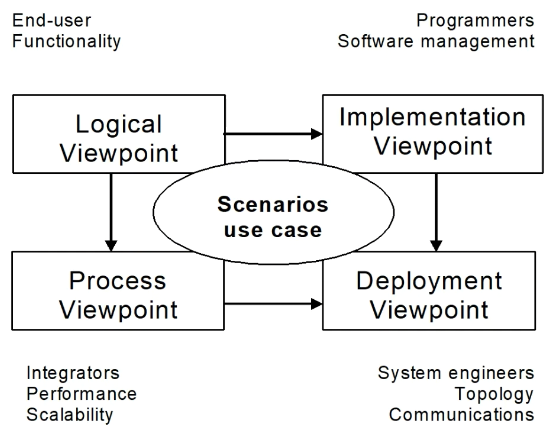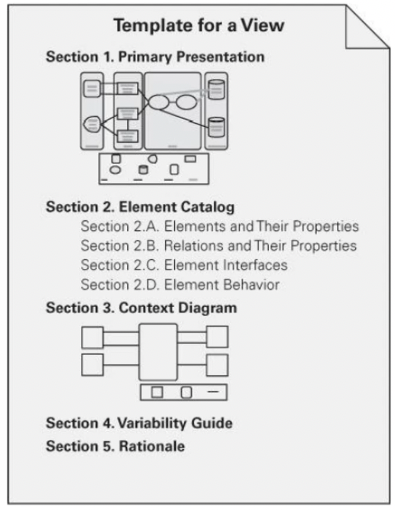Software Architecture
Table of Contents
Architecture representation
Analogy with the architecture of a building:
- overall picture for client
- front view for client and “fine arts” committee
- different view with water supply for plumber
- different view with electrical wiring for electrician
- etc.
Basically, there are two flavors:
- powerpoint slides, for managers/users/clients
- UML diagrams, for technicians
ISO/IEC/IEEE standard for architecture description (ISO 42010)
Defined as architecture views and viewpoints.
System stakeholder: individual/team/organization with interest in system View: expresses architecture of system from perspective of specific system concerns (like a map) Viewpoints: establishes conventions for construction, interpretation, and use of architecture views to frame specific system concerns (like a legend for a map)
Viewpoint specification:
- Viewpoint name
- Stakeholders addressed
- Concerns addressed
- Language, modelling techniques (including explanation of symbols)
Viewpoints separate concerns.
Kruchten’s 4+1 view model

- Scenario viewpoint: small subset of important scenarios to show that elements of four viewpoints work together seamlessly.
- acts as driver to help designers find architectural elements during architecture design
- validates and illustrates architecture design on paper and as starting point for prototype tests
- Logical viewpoint: supports functional requirements (services system should provide to users), shows key abstractions
- Process viewpoint: mapping of functions to runtime elements
- Implementation viewpoint: focuses on organisation of actual software modules (incl. packaging)
- Deployment viewpoint: how various elements from above viewpoints must be mapped onto nodes
How to decide on views
What are stakeholders and their concerns? Which views address the concerns? Then prioritize and maybe combine views.
Documenting a view
- primary representation (graphical/textual)
- element catalog – refer to every element and relation, propose a definition
- perhaps context diagram, variability guide
- rationale – why does the view have what it has?
